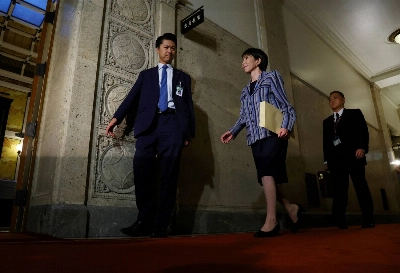Have difficulty getting your head around global warming? Join the club.
For the past few weeks, I have been researching climate change and the Kyoto Protocol. My discoveries gave me pause -- but not about climate. What surprised me was that so many people, scientists and environmentalists alike, were unable to explain the issue in clear, concise terms.
One notable exception was Richard N. Mott, vice president of World Wide Fund for Nature in the United States. Rather than tell you what he told me, I'll let him tell you himself, because he says it so well. Below are the highlights of our discussion.
Q: Some people still say we can't confirm warming is taking place.
A: There really is no longer a serious scientific question whether global warming is taking place -- it is. To that extent, there is not a genuinely valid opposing argument on the central issue. The mean surface temperature of the planet is going up, sea levels are rising and carbon dioxide concentrations in the atmosphere are increasing. To the extent there is a legitimate debate, it concerns how much of the observed warming is human-caused, and how rapidly will it continue in coming decades.
On the first of these questions, the U.N. Intergovernmental Panel on Climate Change, considered to be the leading world scientific authority, has recently confirmed that most of the warming observed in the past 50 years is attributable to human activities. That is a pretty sobering statement; not only is our world warming rapidly, but we humans are causing it.
And on the second point, the IPCC's projected change in global average temperature by 2100 now ranges from about 1.4-5.8 degrees. The upper end of that scenario is truly a cause of concern. It's worth noting that the previous IPCC assessment put the upper limit at 3.5 degrees, so there is a significant shift.
Q: What are the biggest uncertainties and variables?
A: Two big areas we don't understand very well are the role of clouds and water vapor -- whether they will act to block sunlight from coming in, or keep heat from radiating back out. Feedbacks of all kinds are no less cause for concern. For example, the melting of permafrost in the Arctic could unleash massive emissions of methane, a "runaway" feedback that could accelerate further warming.
On climate impacts, a big uncertainty is the prospect of major shifts in the North Atlantic Ocean's "conveyor-belt" -- warming currents that keep Europe's climate temperate.
Q: What are the main obstacles to taking concerted global action?
A: There are a number of obstacles. Public understanding of the problem is one. Much of the media coverage has sought a formulaic "balance," presenting competing experts without revealing that the great weight of scientific opinion says climate change is a real problem. Someone once said this is like interviewing the Flat Earth Society every time the Space Shuttle goes up.
A second problem, of course, is resistance by some in industry. It's no secret that our economy runs in great measure on coal, oil and gas, and that many of the most powerful corporations are heavily invested in them. But if you read the science, it's just as clear that we must move beyond the fossil-energy era. So the question is how soon, not whether, we make the transition. And there are signs that some of the enlightened industries may help lead this process.
Q: What action do you suggest?
A: At this moment, the top political priority has to be prompt ratification of the Kyoto Protocol. While this agreement requires only a relatively modest cut in total emissions, it will serve as a vital political catalyst, kick-starting many of the supplementary actions needed to confront climate change successfully over the long term.
We were very encouraged by Prime Minister Junichiro Koizumi's recent pledge to ratify the protocol in the next year, before the World Summit on Sustainable Development at Johannesburg next September. This WSSD meeting comes on the 10-year anniversary of the 1992 Rio Conference that produced the climate treaty itself.
Japan's ratification is essential. For the protocol to enter into force, countries comprising 55 percent of the emissions cuts must ratify. Without the United States, which has recently reiterated its intention to abstain from the protocol, only ratification by Japan, Russia and the European Union combined can provide the necessary legal basis.
For those who think this lets the United States off the hook, it is worth remembering that many industries [in the U.S.] are concerned that U.S. abstention may put them at a competitive disadvantage, requiring them to answer to competing sets of standards. Even now, there is movement in Congress to consider carbon dioxide limits in the context of domestic air-pollution legislation. The best way to keep pressure on the U.S. is for the rest of the world to go forward.
Q: What bright spots do you see in the debate over warming?
A: World governments finally coming together behind the Kyoto Protocol is an extremely encouraging sign. Just this summer, some academic observers were predicting the protocol's demise because of the absence of the U.S., the world's single greatest emitter. But whether in spite of or because of U.S. rejection, the rest of the world has moved forward. This was a victory for combating climate change and for the international cooperation needed to do so.
Other bright spots include the growing number of companies that are taking on reduction commitments. IBM, Nike and Lafarge are but a few examples of companies that have seen the need to limit emissions and are putting together carbon-management schemes. Such commitments are not limited to business, however. Numerous cities and states (most recently in the U.S. Northeast and the Maritime Provinces in Canada) have announced commitments to curb emissions.


















With your current subscription plan you can comment on stories. However, before writing your first comment, please create a display name in the Profile section of your subscriber account page.